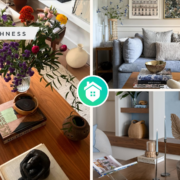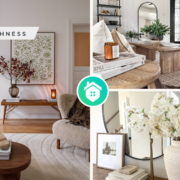Container gardening is a great option for those with limited space or poor soil quality. Especially for those of you who want to have a vegetable garden in your home. With containers, you can grow a variety of vegetables, such as tomatoes, peppers, herbs, and even root vegetables like carrots and radishes. Container gardening is also a convenient way to experiment with different plant varieties and arrangements, making it a fun and versatile option for gardeners of all levels. Plus, the portability of containers allows for easy rearranging to create visually appealing displays in any outdoor or indoor space.

Best Vegetables for Container Gardening
- Tomatoes: Tomatoes can be planted in the container. These vegetables are ideal for small spaces or balconies where traditional gardening may not be possible. They require regular watering and sunlight to thrive.
- Peppers: Peppers can also be the best vegetables for container gardening. Their compact size and ability to thrive in small spaces make them ideal for growing in pots on patios, balconies, or even windowsills. With proper care and maintenance, peppers can produce a bountiful harvest of vibrant and flavorful fruits.
- Herbs: Next, herbs can grow well in the container. This is especially true for herbs like basil, mint, and parsley, which thrive in small spaces and can be easily maintained. Additionally, containers allow for easy mobility and can be placed in optimal sunlight for healthy growth.
- Carrots: Carrots can be planted in the container as long as they have enough depth for the roots to grow. Make sure to choose a container with good drainage to prevent root rot.
Choosing the Right Container
- Considerations for drainage and aeration
- Size and depth requirements for different types of vegetables
- Materials to consider (plastic, terracotta, wood, etc.)
Use traditional pots
The common container for growing vegetables is traditional pots. These pots are typically made of clay or plastic and come in various sizes to accommodate different types of vegetables. They provide a suitable environment for plants to grow, allowing for proper drainage and root development.

Planting vegetables in pots, either plastic or clay, is a great way to save space and control the soil quality for optimal growth. Additionally, using pots allows for easy mobility and rearrangement of the garden layout. Traditional pots from @revolutionfarmfr
Use colorful containers
To enhance the look of your vegetable garden, you can use colorful containers. These containers can add a pop of color and visual interest to your garden, making it more aesthetically pleasing. Additionally, they can also help protect your plants from pests and harsh weather conditions.

These green and blue pots add a pop of color to the vegetable garden. Additionally, the depth of the pots makes these cucumber plants stand out against the vibrant backdrop, creating a visually appealing and cohesive garden space. Colorful pots from @yolissucculentgarden
Hanging baskets or pots
Vegetable container gardens can also use a hanging basket or pot. This is a great option for those with limited space or who want to add some visual interest to their garden. Hanging containers can be filled with a variety of vegetables such as cherry tomatoes, peppers, and herbs.

Planting cabbage in the hanging pots is a creative way to utilize vertical space in your garden. This method can help prevent pests and diseases that commonly affect cabbage when grown in traditional garden beds. Hanging pots from @dr_ici
Mix different containers
One of the benefits of using containers for vegetable gardens is that you can mix different types of containers. For example, you can use large pots for deep-rooted vegetables like tomatoes and smaller containers for herbs or lettuce. By incorporating a mix of containers, you can also easily move plants around to optimize sunlight exposure and growth. This flexibility allows for better plant management and overall garden success.

Mixing plastic and clay pots with wood boxes creates a visual appeal to this vegetable garden. The different textures and materials add depth and interest to the overall design, making it a unique and inviting space. Mix of different containers from @kariagehime.myk
Play with different heights
Furthermore, you can play with different heights and textures of your vegetable container garden. It will add visual interest to your vegetable garden. This can create a more dynamic and visually appealing outdoor space for you to enjoy. It can also help control soil quality and drainage for each specific plant’s needs. This level of customization can lead to healthier, more productive plants in your garden.

Planting vegetables in different heights of pots creates a visually appealing and space-efficient garden. This technique also allows for better organization and easier access when tending to the plants. Different heights of pots from @sandiaseed
Use raised beds
Some gardeners also used a raised bed to grow their vegetables. This container allows for better drainage and prevents soil compaction, resulting in healthier plants with higher yields. Additionally, raised beds can help deter pests and make it easier to maintain the garden by reducing the need for bending or kneeling.

This raised bed is used to grow some vegetables, and it makes it easy to have a vegetable garden in your backyard without having to dig up the ground. Plus, the elevated design helps to prevent pests and weeds from damaging your plants. Raised bed from @krunco
Vertical garden
A vertical garden can be a good solution if you want to have a vegetable garden in limited spaces. This type of garden utilizes vertical space by growing plants upwards on a structure, such as a trellis or wall. You can use hanging pots or containers to maximize space and grow a variety of plants in a small area. This method also allows for easy access to plants for watering and harvesting.

With the help of a trellis, you can hang these potted vegetables in a way that maximizes sunlight exposure and saves space. This method is especially useful for small gardens or balconies where space is limited. Vertical garden from @seedandsavour
Stacking pots
Additionally, stacking pots can be your option for your vegetable container garden. This method allows you to maximize space and grow a variety of vegetables in a small area. It is a great option for urban dwellers or those with small yards who still want to enjoy fresh produce. You can easily move the pots around to ensure each plant gets the right amount of sunlight and water.

Using stacking pots allows you to have an aesthetic vegetable garden. You can plant some vegetables combined with herbs and flowers to create a visually appealing and functional garden space. This method also helps conserve water and maximize limited gardening space. Stacking pots from @justdigitfarms
Window boxes
Even if you don’t have space to place your vegetable garden, you can utilize the space in your window area. You can use a window box to grow your vegetables. Window boxes are perfect for growing herbs, lettuce, cherry tomatoes, and other small vegetables. Make sure to choose a sunny spot for your window box to ensure your plants receive enough sunlight to thrive.

Combining veggies and herbs in a window box is a great way to have fresh ingredients on hand for cooking. Not only does it save space, but it also adds a touch of greenery to your home. Window box from @camilliabloomsbury
Grow in crates
If you have crates in your home, you can use them as a container to grow your vegetables. Crates provide a sturdy base for planting and can be easily moved to optimize sunlight exposure. Additionally, drilling drainage holes in the bottom of the crate will help prevent waterlogging and promote healthy root growth.

Using crates that are raised to grow these herbs allows for better air circulation and drainage, resulting in healthier plants with stronger root systems. By repainting the crates, it adds an aesthetic look to the garden or outdoor space, enhancing the overall visual appeal. Crate planters from @cratesandpallet
Wood pallet planters
Moreover, if you are crafty, you can use pallets for your vegetable container garden ideas. This container gardening method is not only budget-friendly, but also allows for easy customization and mobility. Additionally, using pallets can help to elevate your garden space and give it a unique aesthetic appeal.

Growing lettuce in the wood pallet installed vertically allows for efficient use of space and can be a creative way to add greenery to a small outdoor area. Wood pallet planter from @samanthasflora
Container gardening is a versatile and convenient way to grow vegetables in small spaces or on balconies. With these 11 ideas, you can create a beautiful and productive vegetable garden right outside your door.




















